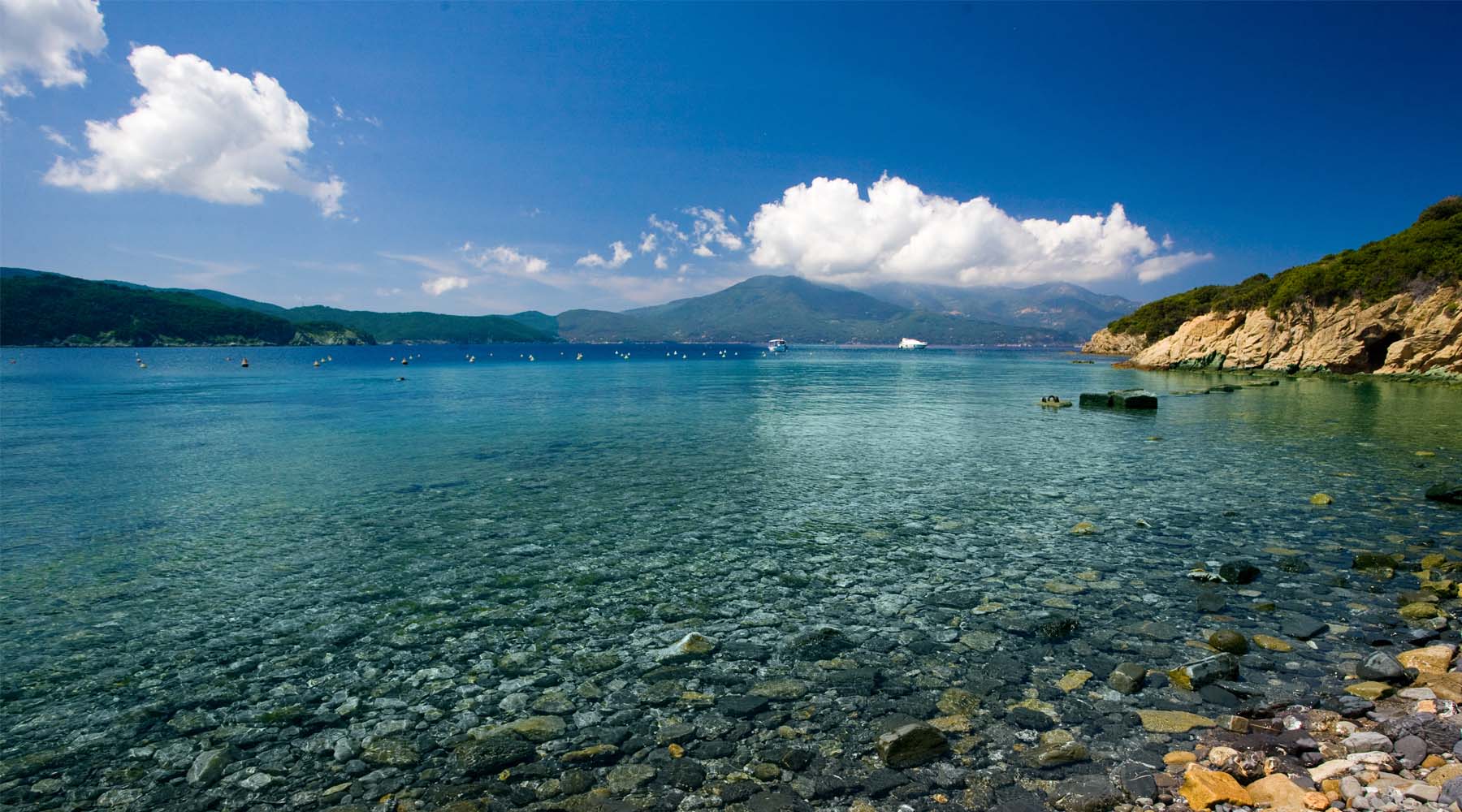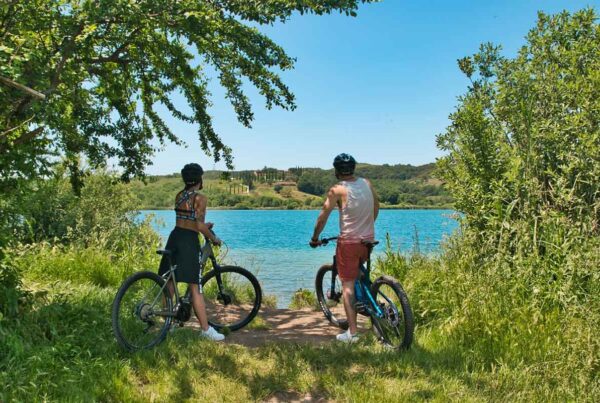The island of Elba and the tuscan archipelago
“According to legend, when Venus, the goddess of beauty, emerged from the beautiful waters of the Tyrrhenian Sea, she dropped seven pearls from the necklace that she wore around her neck, which fell into the sea and became the seven islands of the Tuscan Archipelago”
The Tuscan Archipelago National Park, the largest marine park in Europe as well as part of the Pelagos Sanctuary for marine mammals, includes the islands of Elba, Giglio, Capraia, Montecristo, Pianosa, Giannutri and Gorgona, plus some smaller islands such as Palmaiola, Cerboli, Formiche di Grosseto, Formiche di Montecristo, Formiche di Capraia, Palmaiola and Zanca.
Each island is a reality in its own right, with its own distinctive features and a wonderful array of natural environments, vegetation, culture, history and art. Although this area is protected, it is fully open to visitors and offers a variety of solutions to meet all needs.
Whether for a whole weekend or just a short trip, the islands of the Tuscan archipelago are a little corner of paradise in which to lose yourself and escape from the chaos of city life.
Let’s discover them together…
THE ISLAND OF ELBA
Unspoilt places, crystal-clear water, wild nature, but also history, tradition and culture: the Island of Elba is the largest island in the Tuscan Archipelago and the third largest in Italy.
A variety of stunning landscapes, stretching out one after another from one end of the island to the other: from long stretches of beaches to hilly landscapes and picturesque villages. The island of Elba is a true microcosm, with many places of interest, from the sea and its numerous beaches to the ancient towns and the many traditional events that take place during the summer.
It is the perfect place for lovers of relaxation and nature, as well as a true paradise for sports enthusiasts who can enjoy outdoor activities such as sailing, hiking, mountain biking or horseback riding, scuba diving, fishing or golf and tennis lessons.
The places that definitely merit a visit on the island of Elba are:
- Portoferraio, a city that owes its name to the iron mines which date back to Etruscan and Roman times, was Napoleon Bonaparte’s place of exile, and the villas where he resided can still be visited today: Villa San Martino and Villa dei Mulini.
- Marciana is a small town that retains its medieval layout, with narrow streets paved with the famous Elba stone, narrow houses along alleys filled with flowers, the granite portals of its houses and the tiny squares adorned with fountains.
- With its small harbour and pastel-coloured houses, Marciana Marina is one of the most picturesque destinations on the island of Elba. Don’t miss the romantic walk to the lovely Borgo del Cotone district, an old fishing village with brightly coloured houses, all perched on cliffs overlooking the sea.
- The Capoliveri coast is the perfect place to enjoy a relaxing holiday by the sea. The largest number of beaches on the entire island of Elba are concentrated here, with something for everyone. Well-equipped beaches if you’re looking for comfort and convenience, are located in Lacona, Madonna delle Grazie, Lido and Naregno. The beaches of Laconella or Remaiolo are much wilder, however, along with the spectacular coves and bays located at Morcone, Pareti and Innamorata.
- Porto Azzurro is a pretty fishing village with a small harbour on the Gulf of Mola.
- Rio Marina is another small fishing village on the eastern side of the island of Elba. The Museum of Elba Minerals and Mining Art is definitely worth a visit. It is situated in the centre of the village, inside the Palazzo del Burò where the mine management offices once stood.
- Campo nell’Elba is nestled between the hills of San Piero and Sant’Ilario. The main town in this municipality is Marina di Campo, an old fishing village that is overrun by visitors during the summer season who head to its enormous fine sandy beach (Spiaggia di Cavoli).
THE ISLAND OF GIGLIO
The island of Giglio is best known for its natural beauty: the crystal-clear emerald sea, with its seabed teeming with fish, is the framed by an area dominated by the low Mediterranean scrubland, which is prevalent with its colours and scents.
Beautiful sandy beaches and secluded coves, ancient paths surrounded by abundant vegetation, breath-taking views, the picturesque harbour of Giglio Porto and the charming medieval town of Giglio Castello make the Island of Giglio a true gem just waiting to be discovered. It is the ideal destination for anyone who likes to get in touch with nature and the unspoilt outdoor environment, the sea, walks, birdwatching, minerals and the fascinating underwater world.
CAPRAIA
Harsh and gentle, soft and angular, austere and sunny, barren and green, Capraia is a place filled with contradictions. A wild rock, bathed in dazzling Mediterranean light. The first and only rule is not to be in a hurry. Capraia seduces you with its apparent indolence; it seems to want to conceal its innermost secrets, but then opens up and welcomes you in, hoping not to see you leave too soon.
THE ISLAND OF MONTECRISTO
Dark and monolithic, impervious and solemn, the treasure island emerges from the Tyrrhenian Sea cloaked in a mysterious and solitary aura. The Island of Montecristo is one of the most inaccessible and wildest islands in the entire Tuscan Archipelago and also the one furthest from the mainland coast.
Today, it is uninhabited and wild, covered in Mediterranean scrub, and an important place of refuge and rest for migratory birds. The wild goats are the undisputed rulers of the island. Their eating habits have slowly altered the scrubland that was originally present.
The only inlet on Montecristo where landing and mooring is fairly easy is Cala Maestra, on the north-western side of the island. On arrival, you can see the only building on the island, the Watson-Taylor mansion, where there are practically the only trees on the entire island. The valley that overlooks it is one of the largest and the only permanently inhabited area on the island. The wardens reside there, joined by a few forest rangers during the summer season.
PIANOSA
Pianosa is located south of Elba and almost invisible from afar because it is so flat. Even the vegetation is low-growing, a “garrigue” scrubland, waging a constant battle against drought. The story goes that in 1553 the island was laid to waste by the pirates, Dragut and Kara Mustafà, who destroyed the Pisan castle, wiped out most of the population and deported the survivors.
Pianosa then remained uninhabited until it became a maximum security prison. This bitter fate has preserved the island from tourist resorts and other economic activities, safeguarding its seabed, which is among the most unspoilt in the Mediterranean.
THE ISLAND OF GIANNUTRI
Giannutri rises up from the waters of the Tyrrhenian Sea like a white crescent of limestone. Rocky cliffs dominate the eleven kilometres of coastline, dotted with caves and fissures caused by the action of the wind. The only landing points on the island, Cala Spalmatoio and Cala Maestra, have two small pebble beaches.
It is surrounded by beautiful seabeds rich in biodiversity, where dolphins and minke whales frequently swim. There is no natural water source and the few dwellings present are located around the small harbour and scattered in the scrubland. Visitors and hiking enthusiasts will be captivated by the beautiful landscape and rewarded with stunning scenery as they follow the various paths along the offshoots towards Monte Mario and Poggio Capel Rosso.
GORGONA
Gorgona is the smallest of the islands in the Tuscan Archipelago National Park.
The mountainous territory on the western side culminates in Punta Gorgona, while the eastern side is criss-crossed by three small valleys, the northernmost of which runs down to the sea at the small beach and the village where the Cala dello Scalo landing is located.
Despite the lack of watercourses, the island is self-sufficient thanks to the presence of deep, productive wells. The main centre of the island is a small village laid out around the small port. If you venture inland, you will come across two ancient fortifications: the Torre Vecchia built by the Pisans, and the Torre Nova built by the Medici.








